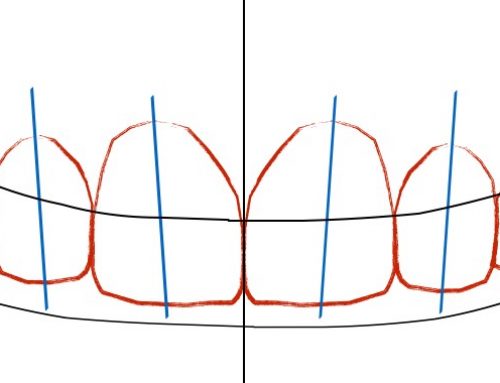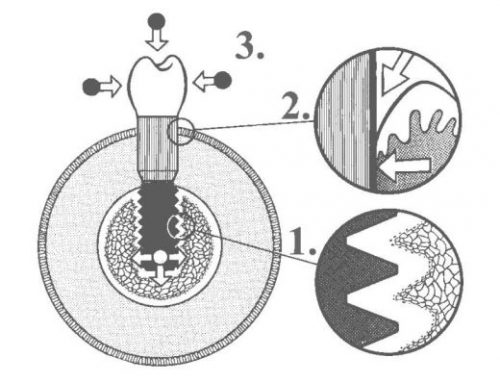By Prim. Dr. Tome Tasevski
Cemented implant restorations are widely used by many dentists. The traditional abutment design resembles a natural tooth prepared for a crown with a similar taper and a chamfer finish line. A frequent complication associated with implant restorations in the esthetic zones is the recession of buccal gingiva over time. Abutment morphology, among several other prosthetic factors, may play an important role in the stability of the gingival margin in esthetically sensitive areas, but this has never been thoroughly analyzed.
The abutment morphology traditionally mimics a prepared natural abutment. The intrasulcular part of the abutment emerges from the implant platform, expanding coronally to reach the buccolingual and mesiodistal dimension of the prosthetic tooth to be replaced. The emergence profile of the abutment is continued into the emergence profile of the crown, and a defined finish line (usually a chamfer) is placed on the abutment and generally positioned subgingivally on the buccal in the esthetic zone. Therefore the buccal gingival contour is shaped by the abutment profile.
Marginal gap and expanded profile may explain the higher incidence of buccal gingival recession in cemented implant restorations in the esthetic zone. Therefore modifications of the morphology of the abutment have been considered.
Recently, a prosthetic technique called biologically oriented preparation technique (B.O.P.T) has been proposed, which utilizes a feather-edge preparation on natural abutments, and it has been claimed that applying the concepts of this technique to implant abutments could improve long-term gingival margin stability.
The B.O.P.T approach suggests modification of the gingival contour by provisional restorations. Once the ideal gingival contour has been achieved, the gingival contour is replicated to the final restorations precisely. The BOPT approach suggests finishing the tooth preparation without a defined shoulder so that the gingival margin can be modified freely. However, for BOPT, the convexity of the final restoration should be similar to that of the natural teeth and could play a role in remodeling
The decision to simplify the range of B.O.P.T abutments to one or two sizes per implant system is also supported by the excellent clinical results of the Platform Switching (see Platform switching) protocols reported in literature. With B.O.P.T abutments mismatching is made available for larger amount of gingival tissue which is organized and stabilized in keratinized tissue around prosthetic crown.
The gum has the capacity to cling to the forms both in a prosthesis on natural teeth and in one on implants. The vertically designed B.O.P.T abutments have tapering shape that allows the increase of space for an increase of the thickness of the gum around the circumference and better adaptation to the emerging profile of the prosthetic restoration.
Some concerns may arise if this particular design is implemented in every clinical situation. With these considerations in mind, this article proposes the “hybrid abutment” design (HAD), a new design that includes a combination of the two types of features–a feather edge on the buccal side, and a chamfer finish line on the lingual side.

h3>READ MORE:
http://www.dentalxp.com/course/vertical-or-shoulderless-preparations-1182768.aspx
http://www.ncbi.nlm.nih.gov/pubmed/23390618
http://www.dentalxp.com/content/3042/7c51b3a4-888b-45b9-9b80-3db40a13f91c.pdf





